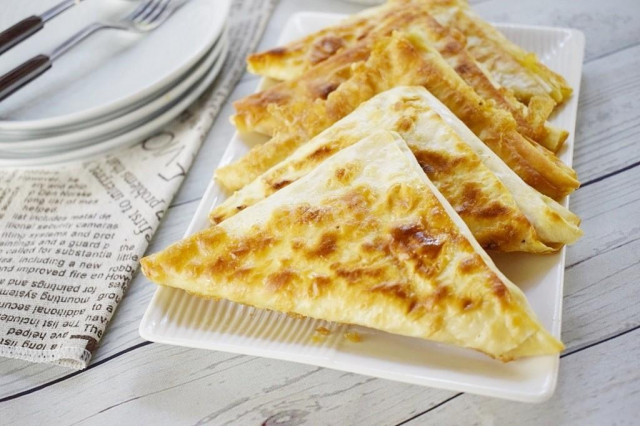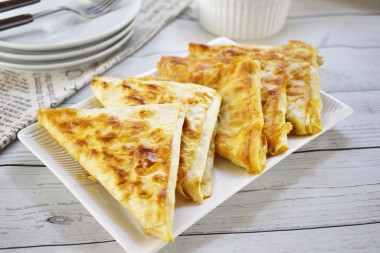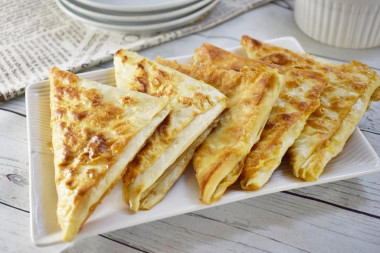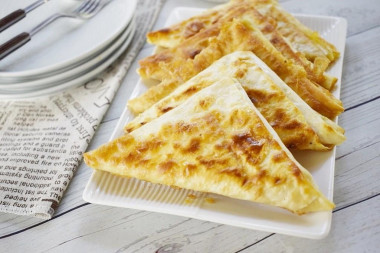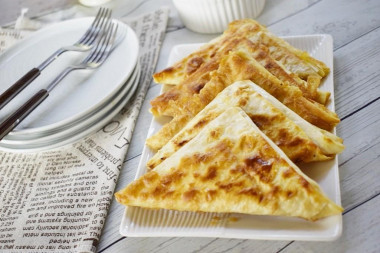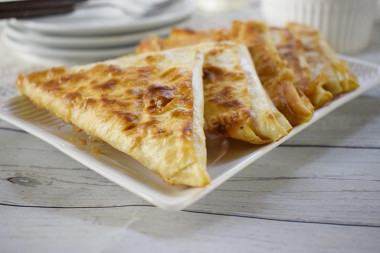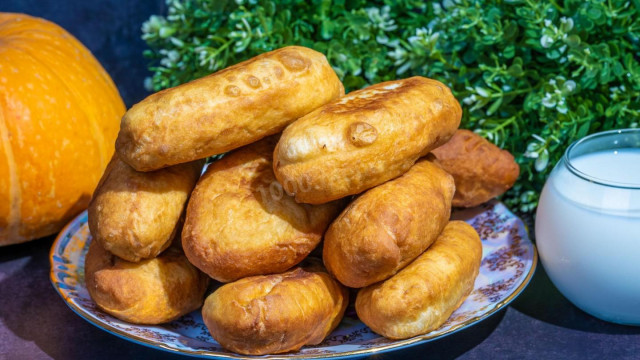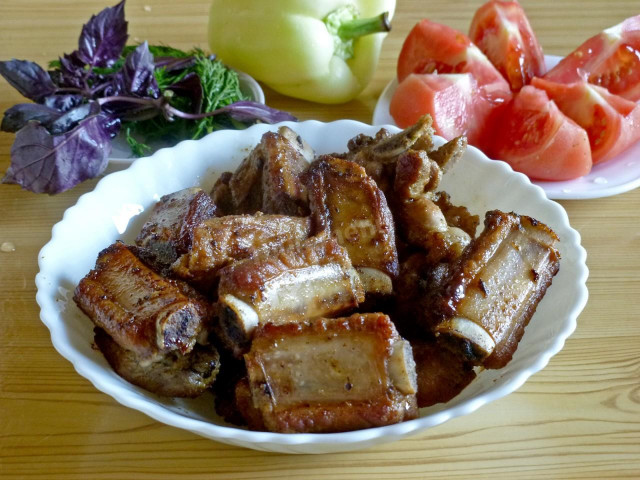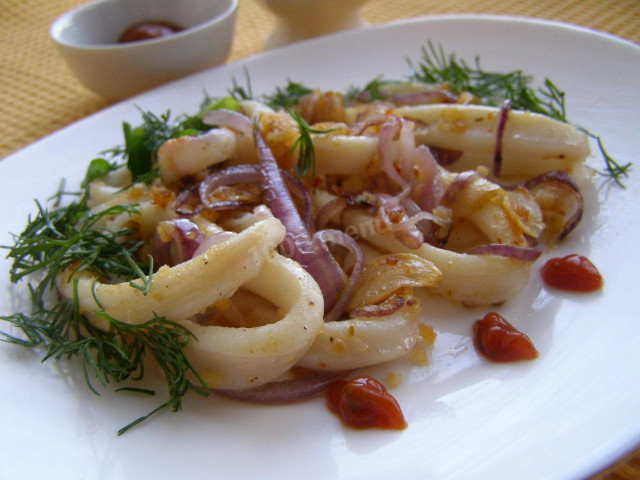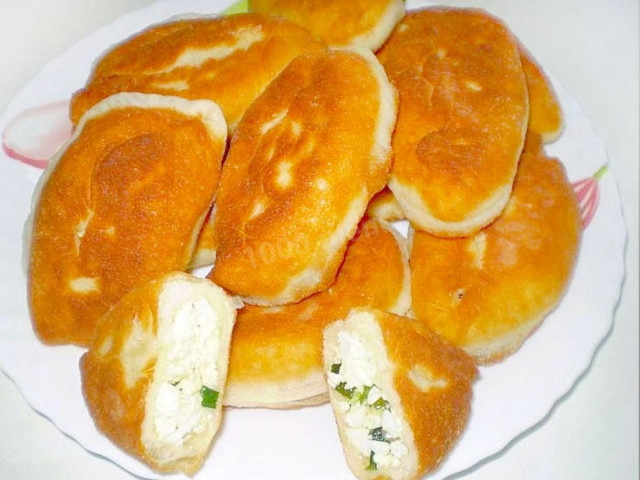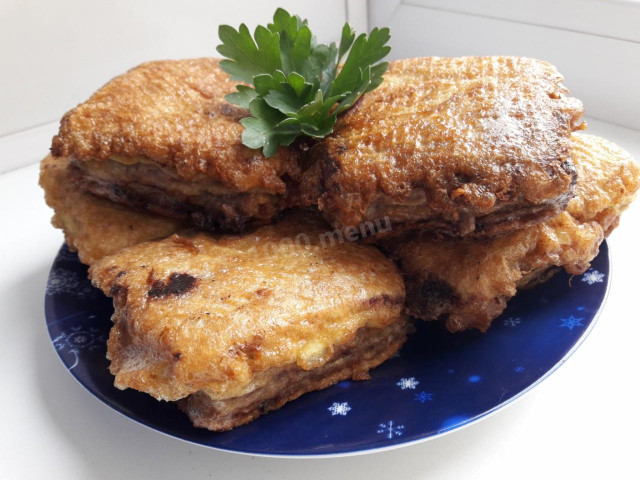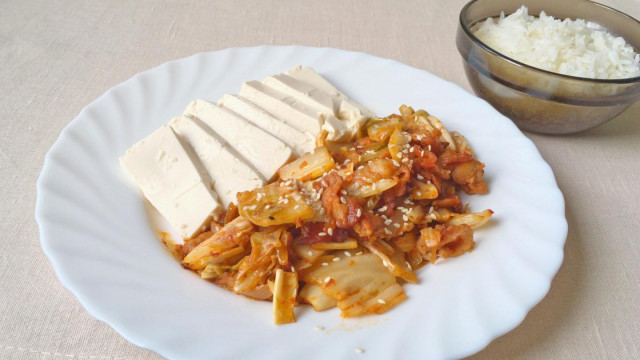Composition / ingredients
Step-by-step cooking
Step 1:
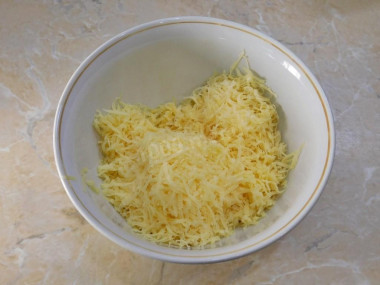
To make triangles of pita bread with egg and cheese in a frying pan, take hard cheese and grate it on a medium grater. If desired, you can add any aromatic spices to the cheese.
Step 2:
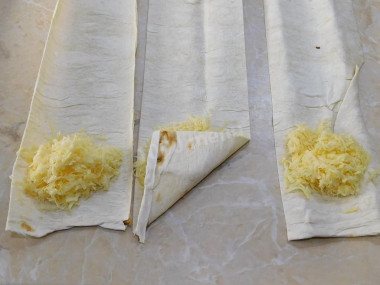
Cut the lavash into longitudinal strips about 10-12 centimeters wide. Put a little grated cheese on the edge and tuck one corner. It turns out a triangle.Now turn it forward, and then angle it again. And so on until the end of the strip.
Step 3:
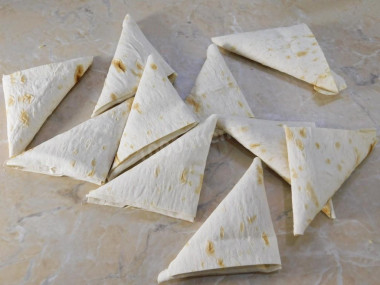
Wrap all the triangles in this way. The whole filling will turn out inside and will be securely sealed from all sides.
Step 4:
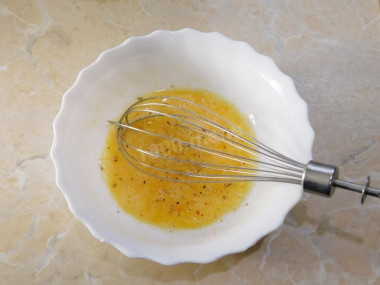
Break one egg into a separate bowl and add water. Add a little salt and spices to taste. Using a whisk, mix everything into a homogeneous mass.
Step 5:
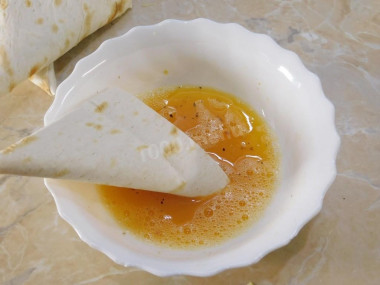
Dip each triangle into the egg mixture from all sides.
Step 6:
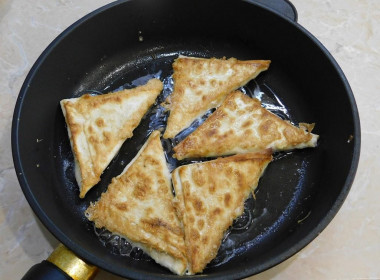
Pour a little vegetable oil into a hot frying pan and lay out the triangles. Fry them over medium heat for a minute on each side. Help yourself to ready-made triangles immediately, while they are hot, so that the cheese in them stretches appetiingly. Enjoy your meal!
Pita bread triangles can be prepared with a variety of fillings. Here it is already worth focusing on the contents of your refrigerator. You can use minced meat, mushrooms, ham, fish, bacon, tomatoes in the filling. And I recommend always adding grated cheese to all this. In my opinion, cheese in such dishes is the very highlight that makes them so appetizing. Just from the thought of how the melted cheese will stretch in the section, hungry salivation already appears.
But in addition to such hearty fillings, you can wrap in pita bread and sweet fillings. For example, from sweet cottage cheese or fruit.
You can always use such a recipe in a hurry when there is no time for long-term cooking. And just as a snack at school or at work.
No one can resist such a delicious and fragrant snack! I recommend it!
How to choose the right pita bread? First of all, look at the date of manufacture on the package. Do not take expired pastries. Fresh pita bread should have a pleasant smell. Take a good look so that there are no stains and signs of mold on it.
Any oils are useful only until a certain temperature is reached - the point of smoking, at which the oil begins to burn and toxic substances, including carcinogens, are formed in it. How to determine the roasting temperature and choose the best oil for frying, and which is better not to use at all, read here .
Since the degree of salinity, sweetness, bitterness, sharpness, acid, burning is individual for everyone, always add spices, spices and seasonings, focusing on your taste! If you put some of the seasonings for the first time, then keep in mind that there are spices that it is especially important not to shift (for example, chili pepper).
Caloric content of the products possible in the composition of the dish
- Chicken egg - 157 kcal/100g
- Egg white - 45 kcal/100g
- Egg powder - 542 kcal/100g
- Egg yolk - 352 kcal/100g
- Ostrich egg - 118 kcal/100g
- Dutch cheese - 352 kcal/100g
- Swiss cheese - 335 kcal/100g
- Russian cheese - 366 kcal/100g
- Kostroma cheese - 345 kcal/100g
- Yaroslavsky cheese - 361 kcal/100g
- Altai cheese 50% fat content - 356 kcal/100g
- Soviet cheese - 400 kcal/100g
- Cheese "steppe" - 362 kcal/100g
- Uglich cheese - 347 kcal/100g
- Poshekhonsky cheese - 350 kcal/100g
- Lambert cheese - 377 kcal/100g
- Appnzeller cheese with 50% fat content - 400 kcal/100g
- Chester cheese with 50% fat content - 363 kcal/100g
- Edamer cheese with 40% fat content - 340 kcal/100g
- Cheese with mushrooms of 50% fat content - 395 kcal/100g
- Emmental cheese with 45% fat content - 420 kcal/100g
- Gouda cheese with 45% fat content - 356 kcal/100g
- Aiadeus cheese - 364 kcal/100g
- Dom blanc cheese (semi-hard) - 360 kcal/100g
- Lo spalmino cheese - 61 kcal/100g
- Cheese "etorki" (sheep, hard) - 401 kcal/100g
- White cheese - 100 kcal/100g
- Fat yellow cheese - 260 kcal/100g
- Altai cheese - 355 kcal/100g
- Kaunas cheese - 355 kcal/100g
- Latvian cheese - 316 kcal/100g
- Limburger cheese - 327 kcal/100g
- Lithuanian cheese - 250 kcal/100g
- Lake cheese - 350 kcal/100g
- Gruyere cheese - 396 kcal/100g
- Vegetable oil - 873 kcal/100g
- Armenian lavash - 236 kcal/100g
- Lavash - 277 kcal/100g
- Salt - 0 kcal/100g
- Water - 0 kcal/100g
- Spices dry - 240 kcal/100g

